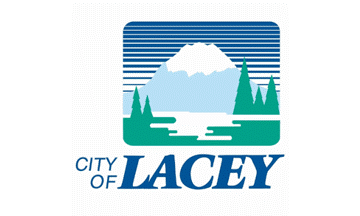Published on:
Among Washington’s 39 counties, King County is known for having exorbitant housing costs. A recent two-part report in The Olympian delved into Thurston County’s ever-increasing prices, focusing on Olympia and Lacey where housing advocates hope to add many more accessory dwelling units (ADUs) as one way to increase the supply of less expensive homes.
Thurston County’s population grows by an average of 4,000 people annually, making it one of the state’s fastest growing counties, according to the Thurston Regional Planning Council (TRPC). Most of the growth is concentrated in the Olympia-Lacey-Tumwater area.
That county’s Housing Affordability Index (HAI), at 123.5 for first quarter 2020, makes it more affordable than the four-county Puget Sound Region consisting of King, Kitsap, Pierce and Snohomish counties, but less affordable than adjacent counties to the West (Grays Harbor and Mason). Since 2014, the HAI for first-time homebuyers in Thurston County has been considered unaffordable, and, according to TRPC, affordability continues to decrease.
Housing supply is lagging population growth and wages are not keeping pace with spiraling costs of housing, whether for home buyers or renters. These twin challenges are among reasons groups like Olympians for People Oriented Places (O-POP) cite for needing zoning reform that would allow more housing options.
In a status report on its website, O-POP notes the “Missing Middle housing recommendations” passed unanimously by the Olympic City Council in November 2018, allows for more diverse housing units and removes barriers to building ADUs, tiny homes, duplexes, triplexes and other options. Nevertheless, those code updates are expected to create only 474 to 946 new residential units (not including ADUs) in Olympia over the next 20 years – only 3.6% to 7.3% of the anticipated need for new residences through 2035.

Although Olympia city officials have expressed support for ADUs, the report identified several onerous policies that hinder development of more such dwellings, which are also known as backyard cottages, in-law units, tiny houses, granny flats, or by dozens of other names.
Olympia’s Planning Department data indicate there are around 100 permitted ADUs in the city, which have been allowed since 1995. (A “significant number” of unpermitted units also exist according to anecdotal information.)
“Those interested in building an ADU in Olympia face regulations that can quickly torpedo the project,” wrote Brandon Block, The Olympian’s housing and homelessness reporter.
Among deterrents The Olympian cites are:
- A requirement that all ADUs be owner-occupied (the owner must live on site, either in the ADU or the primary house on the lot). That requirement could be eased as early as this month.
- A requirement that ADUs provide one off-street parking space.
- High costs of building, which includes an estimated $3,500-$4,000 in development impact fees.
- A requirement that the builder of an ADU install an automatic fire sprinkler system (required in all new residential structures in Olympia since 2014). Compliance could add $8,000-to-$10,000 to a project, according to one builder. (Exemptions for ADUs are being considered.)

Unlike Olympia, the city of Lacey doesn’t charge development impact fees, does not require fire sprinklers in new housing, and waives utility hookup fees for ADUs. The city has also made available free pre-approved designs for ADUs created by a local architectural firm.
Olympia code enforcement officer John “J.W.” Malone told the newspaper reporter the process of enforcement is complaint-based. If an unpermitted ADU is reported, the property owner is notified and given 14 days to fix the violation or be subject to a civil infraction and fine. The unit could also be condemned. Some older units that may have been approved but no longer meet code are classified as “existing nonconforming” and allowed.
It was also noted that real estate agents “have a responsibility to disclose permitting issues to prospective buyers, but not all buyers are savvy enough to check.”
Olympia appears to be making progress on amending its Housing Options Code. At the November 2 meeting of the Planning Commission, commissioners approved a recommendation that increased the maximum size of ADUs to 850 square feet, allow triplexes in the R 4-8 zone, allow fourplexes in the $ 4-8 and R 6-12 zones, and allow sixplexes in the R 6-12 zone. Commissioners also authorized sending a letter summarizing its recommendations to the City Councill.